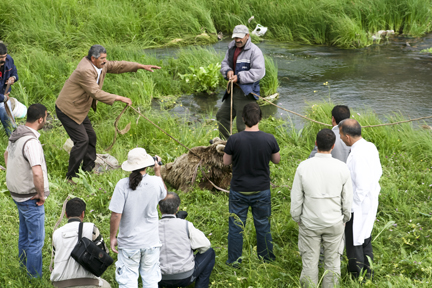Documenting and Conserving Turkey’s Vanishing Biodiversity

The inset shows our team working with local villagers to rescue a crippled brown bear who had become trapped within a slippery ravine after being hit by a car.
By Sean Anderson, Associate Professor of Environmental Science & Resource Management
My Environmental Science & Resource Management colleagues and I never set out to stir up controversy, but sometimes simply being a dedicated scientist or objective observer of the world amounts to just that. Take for example two papers I recently published with my colleagues highlighting Turkey’s growing conservation crisis, the worst in this continental and cultural crossroads of a country’s long and fascinating history. “Turkey’s Globally Important Biodiversity in Crisis,” a detailed review of Turkey’s biodiversity, habitats, and conservation issues was published in the December 2011 issue of the journal Biological Conservation. The follow-up piece in Science, “Turkey’s Rich Natural Heritage Under Assault,” highlights the scale and extent of these threats, in particular the myriad of environmental laws that were changed over the past two years to make it easier to replace Turkey’s crucial ecosystems and protected areas with mines, dams, tourist resorts, and other types of “development.”
Turkey’s astonishing amount of biodiversity for a temperate country of its size is quickly eroding, particularly over this past decade. In addition, Turkey lacks the biological ‘‘charisma’’ of many tropical countries and suffers from the international misconception that, as a nation that wants to enter the European Union, it must have adequate funds and priorities to support conservation. These factors, combined with the Turkish public’s general disinterest in conservation and the government’s unrelenting ‘‘developmentalist obsession,’’ have brought to a head a conservation crisis begun in the 1950s. With Turkey’s biodiversity facing severe and growing threats, especially from the government and business interests, the country has now become entirely covered by so-called crisis ecoregions, most of them critically endangered.
Unchecked urbanization, dam construction, draining of wetlands, poaching, and excessive irrigation are the most widespread threats to biodiversity. Preserving Turkey’s remaining biodiversity will necessitate immediate action, international attention, greater support for Turkey’s developing conservation capacity, and the expansion of a nascent Turkish conservation ethic.
